Monday Mileage Champion: Lawdy! Lawdy!
Lawdy! Lawdy! Guess who’s 40!
Well, it happened. After a weekend where my daughter scores the game winning basket and the trade-ins numbered 6432, I hit the golden age of middle age.
As for the 1983 Jeep Grand Wagoneer in the picture, would you believe 403,224 miles? That little factoid was just the very tip of a long data drilldown.
Not to mention a few unusual future contests between the automakers in what will now be called the Trade-In Quality Index… or TIQI for short!
The grandest of Wagoneers was followed by a Ford truck and six consecutive Toyota products. All in all, the quintet of Ford trucks, Chevy trucks, Hondas, Toyotas, and Panther vehicles took 23 of the top 30 mileage spots. If you were extra kind and added Dodge trucks and Jeep SUV’s into the mix, that number swelled to 27 out of 30 top spots.
But that wasn’t the big surprise. Not even close. For that you have to start with Europe. All of Europe.
The European nameplates encompassed 13 different brands, over 60 nameplates, and exactly 1018 trade-ins this past week. Only 48 of those vehicles had over 180,000 miles, and only 20 of the 1018 reached the ripe old automotive age of 18. I should mention now that the outift furnishing me with all this data wears a nice big smiley face of dealerships across the USA with only a few spots where rust is an issue.
So I’ve made the longevity measurement a bit further out so that maybe, perhaps, we could look at the impact OBD-II standards will have on the longevity of vehicles by next year.
Anyhow, the European marques lost to Toyota and Honda on both measurements. Not to mention a long list of others. What I didn’t expect was that all 13 European brands would lose to the Honda Accord alone and nearly lose to the Toyota Camry.
Vehicles with over 180k at trade-in
Accord 58 / 204 vehicles
Camry 45 / 171 vehicles
EU 48 / 1018 (VW, Audi, BMW, Volvo, SAAB, Land Rover, Jaguar, Mercedes, Mini, Maserati had 1, Porsche, Smart, Lotus)
Now keep in mind, a team of twelve people are tracking an awful lot of criteria at this point. The data is a bit overwhelming. So here is a Cliff Notes version of week one.
Those with the healthiest ratio of vehicles traded-in at over 180k, versus those traded in at less than 120k were…
Toyota 1.52
Honda 1.61
Lexus 1.62
Chevy Truck 2.07
and the big surprise
Pontiac 2.45
This means that for every Pontiac traded in at over 180k, there were approximately two and a half that were traded in at less than 120k. Pontiac barely beat out Acura and Ford trucks by the slimmest of margins. However we are incorporating a long list of other criteria (see the spreadsheet) along with time of ownership into this study. (for those that qualify)
By that measurement alone the winners for week one are…
1) Buick
2) Acura
3) Toyota
4) Honda
5) Cadillac
Keep in mind this is only week one and I am willing to give in to the fact that state registrations will provide a far better record of longevity than this 300k vehicle study. Still, the folks coming in to trade these vehicles typically use them as commuters instead of garage queens and barn molderizers. The Buicks and Cadillacs from 1995 on down may not be driven a lot, and especially by us enthusiasts. But they are well regarded by the grey haired Shoney’s crowd here in North Georgia and elsewhere. So it’s only fitting we give them a little bit of their due.
Now to the fun part. Out of all the laggards that are higher volume brands, it appears that Volkswagen, Hyundai and Kia are going to suffer the most. Volkswagen only attained 5 vehicles with over 180k out of 221. Who beat them?
This model. The Pontiac Grand Prix. A model that is not synonymous with any level of quality. Good or bad. The Grand Prix realized 11 vehicles out of 50 with over 180k miles. So for the remainder of this year we are going to track how the Grand Prix does relative to the #2 sized manufacturer in the world.
Then we have Kia and Hyundai. Personaly, I am just dead dog tired of having folks tell me how wonderful these brands are compared with so-called crappy domestics. So I’m going to let these South Korean juggernauts do battle with GM’s defunct import fighter. You know. The one that doesn’t have the word Old in it. The one to the left. No, not SAAB. The other one!
South Korea vs. Saturn
8 / 203 vs. 11 / 95
There is an awful lot of good data we have at the moment, and as we get more of it, we’ll delve in deeper to mehanical issues and the weaknesses and strengths of specific models. For now enjoy the spreadsheet below. All the best!
More by Steven Lang
Latest Car Reviews
Read moreLatest Product Reviews
Read moreRecent Comments
- Bd2 Would be sweet on a Telluride.
- Luke42 When will they release a Gladiator 4xe?I don’t care what color it is, but I do care about being able to plug it in.
- Bd2 As I have posited here numerous times; the Hyundai Pony Coupe of 1974 was the most influential sports and, later on, supercar template. This Toyota is a prime example of Hyundai's primal influence upon the design industry. Just look at the years, 1976 > 1974, so the numbers bear Hyundai out and this Toyota is the copy.
- MaintenanceCosts Two of my four cars currently have tires that have remaining tread life but 2017 date codes. Time for a tire-stravaganza pretty soon.
- Lorenzo I'd actually buy another Ford, if they'd bring back the butternut-squash color. Well, they actually called it sea foam green, but some cars had more green than others, and my 1968 Mercury Montego MX was one of the more-yellow, less-green models. The police always wrote 'yellow' on the ticket.



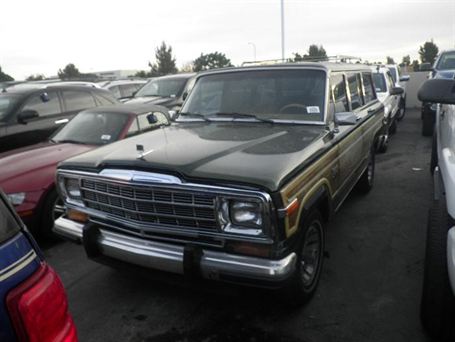

















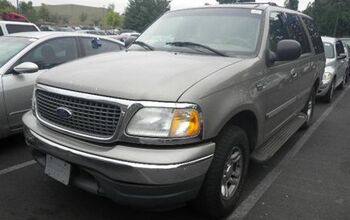
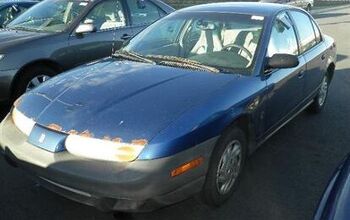
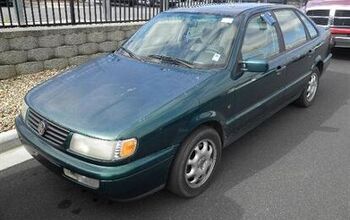
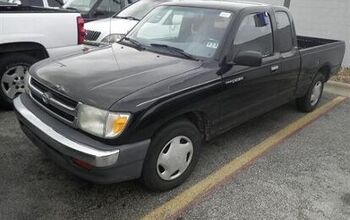
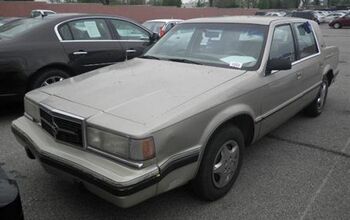










Comments
Join the conversation
how were are able to tell the millage of the Jeep? The odometer rolls at 100k. (At least it does on my 1986 GW).
The Saturns have plastic body panels that don't accumulate door dings, surface rust or paint fade. I wonder how much a car in decent cosmetic shape benefits in longevity by being more likely to be repaired because, gosh, it's still a good looking car. In the case of Saturn, it can't be because of the state-of-the-art drivetrain.